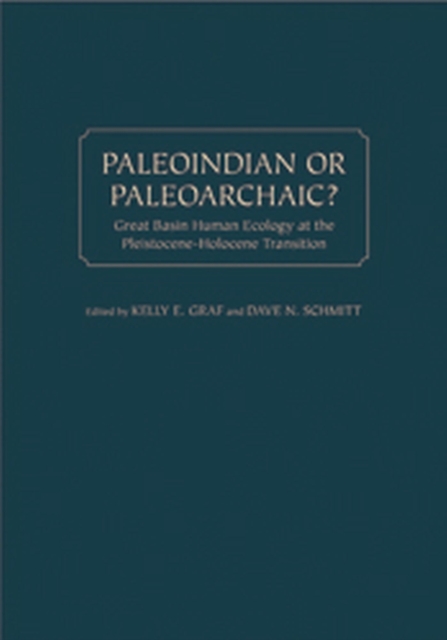
Paleoindian or Paleoarchaic? : Great Basin Human Ecology at the Pleistocene-Holocene Transition Paperback / softback
Edited by Kelly Graf
Paperback / softback
Description
Were the earliest inhabitants of the Great Basin 'Paleoindians' in the traditional sense?
Were they highly mobile foragers? Did they hunt large, now extinct animals like mammoth, horse, and camel?
Great Basin archaeologists have argued that the earliest inhabitants possessed an organization strategy of mixed 'Paleoindian' and 'Archaic' lifeways, referring to them as 'Paleoarchaic.' Recent excavations of rock shelters and caves, coupled with innovative studies of the surface archaeological record have increased our understanding of human organization in the Great Basin during the late Pleistocene and early Holocene.
When did humans first inhabit the Great Basin? How do we interpret projectile point variability from late Pleistocene and early Holocene contexts?
What land-use and foraging strategies characterized the early inhabitants?
Did these hunter-gatherers possess a Paleoindian or Paleoarchaic lifeway?
This volume offers an updated perspective of human ecology and organization during the Pleistocene-Holocene transition in the Great Basin, 13,000-8,000 years ago.
Information
-
Out of Stock - We are unable to provide an estimated availability date for this product
- Format:Paperback / softback
- Pages:318 pages, 108 figures, 47 tables
- Publisher:University of Utah Press,U.S.
- Publication Date:30/08/2010
- Category:
- ISBN:9781607810278
Information
-
Out of Stock - We are unable to provide an estimated availability date for this product
- Format:Paperback / softback
- Pages:318 pages, 108 figures, 47 tables
- Publisher:University of Utah Press,U.S.
- Publication Date:30/08/2010
- Category:
- ISBN:9781607810278






